The History of Money
The story of money goes hand-in-hand with that of mankind. Considering how important money is to each of us, this should come as no surprise. Since at least as far back as 1200 BC, people have been giving value to objects such as cowry shells, metals, paper and, now, computer code to use as mediums of exchange. When considering the value of, let’s say, a cowry shell, person today may wonder why his or her money has value.
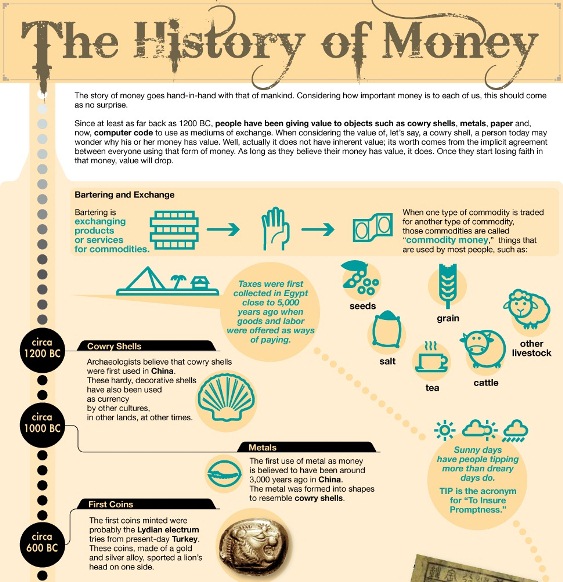 Source: creditdonkey
Source: creditdonkey
The History of Money and Payments
From barters to bytes, financial exchanges have evolved with civilization. Just a few centuries ago, mankind paid and bartered goods with slabs of meat and baskets of berries. In the digital age, we now have the convenience of virtual payments and a plethora of mobile payment options that allow us the freedom to pay for goods almost anywhere.
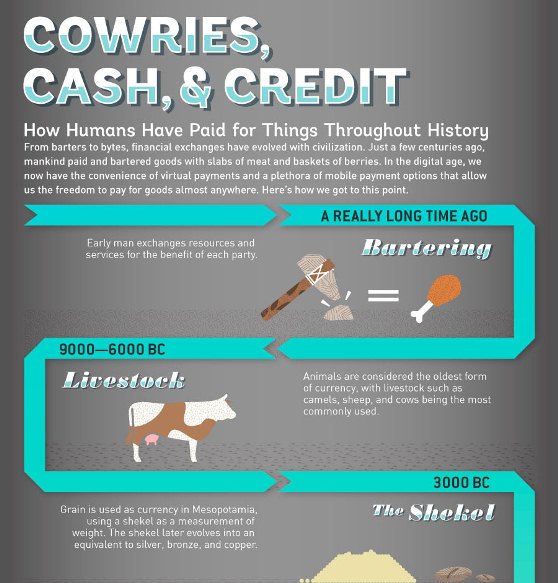 Source: intuit
Source: intuit
The New Workplace Currency
Cisco interviewed college students & young professionals from around the world. To see exactly what social media, mobile devices and the internet mean to them – and how these attitudes will influence job decisions.
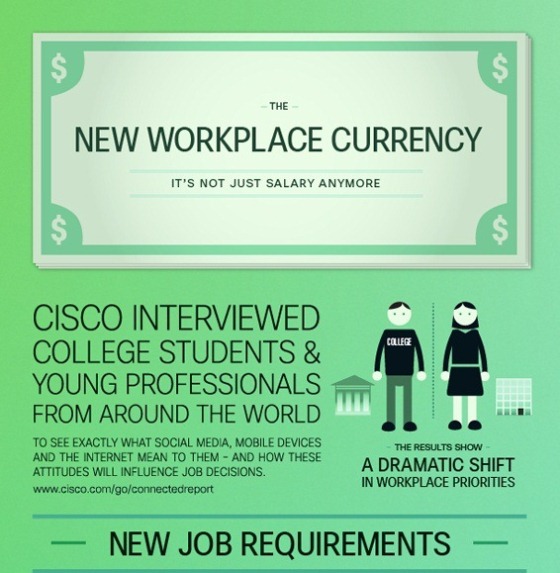 Source: cisco
Source: cisco
Penny to Paper: How Much Does it Costs to Make U.S. Currency?
Each year the Federal Reserve Board provides a projection, acquired from the department of the Treasury’s Bureau of Engraving and Printing, for the need of new U.S. paper currency. As you will see, it takes money to make money. In fact, it takes a lot of money to make money.
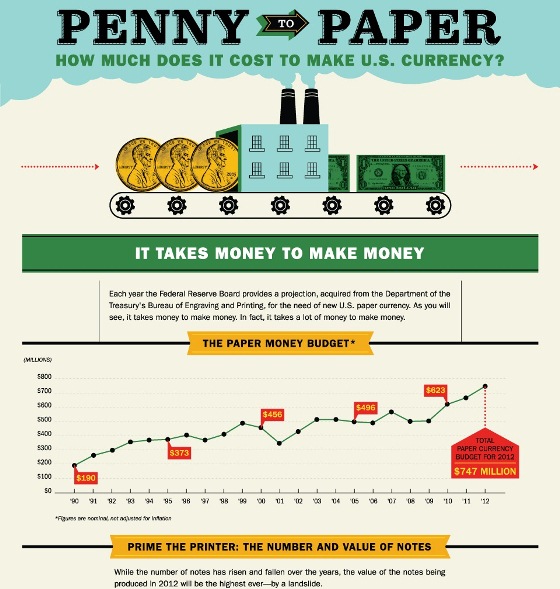 Source: creditsesame
Source: creditsesame
Counterfeit Currency: What is the Price of Free Money?
We all spend much of our lives handling money. In fact, cash is so commonplace to us that we often scarcely pay any attention to it all. Look a little closer and you’ll soon appreciate how big of an issue currency counterfeiting is. Criminals stand to make millions, and governments invest even more than that to make their money as hard to fake as possible.
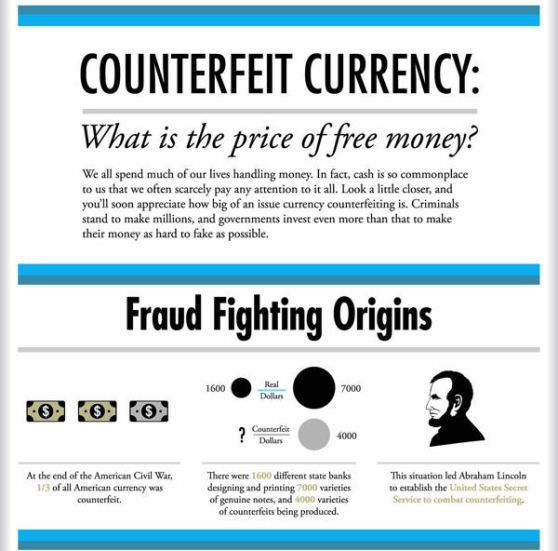 Source: prafulla
Source: prafulla
The History of High-Value U.S. Currency: The Bills that Plastic Forgot
These days, nearly all purchases over $100 are made on plastic. However, not too long ago, the pockets of America’s most wealthy held bills that would make most of us cringe to imagine carrying. These high denominations were commonly used for bank-to bank transfers and large federal transactions, but electronic transfers have since made those high-value bills obsolete.
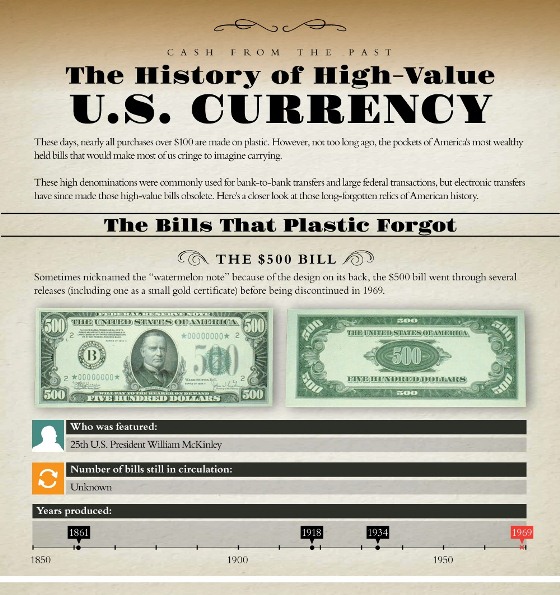 Source: creditsesame
Source: creditsesame
Bypassing the US Dollar
On June 1, 2012, China and Japan agreed to establish a direct yen / yuan exchange rate. Prior to this agreement, businesses in both countries were forced to first convert their currencies to U.S. dollars in order to buy either yen or yuan as needed to complete sales transactions between the two countries.
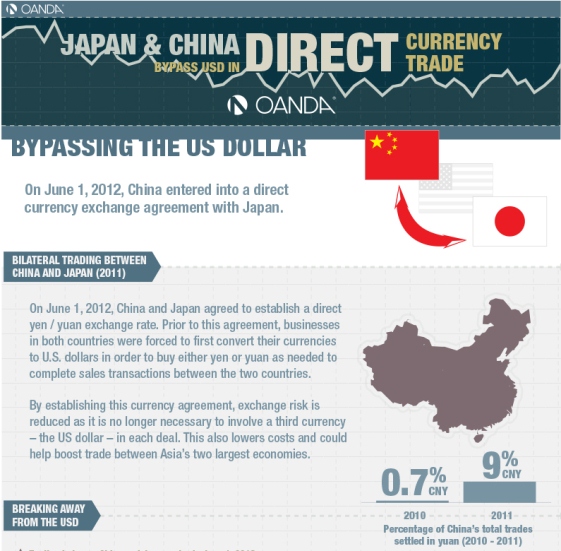 Source: oanda
Source: oanda
Money 101: For Parents & Teens
Parents face numerous dilemmas about their kids and their kids’ money: how much allowance to pay, when to open their bank accounts, how to teach the value of a dollar. Opinions and approaches may vary, but saving for a rainy day is always smart.
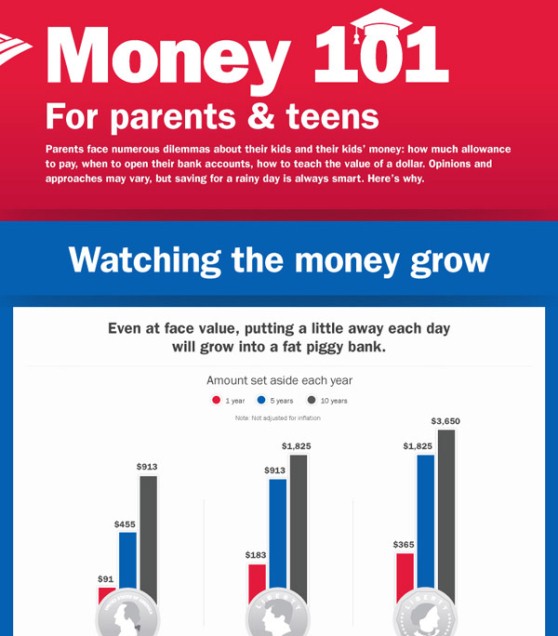 Source: bankofamerica
Source: bankofamerica
Turbotax Infographic: Bitcoins—the Taxless Currency
Created in 2009 by a Japanese programmer, bitcoins are the first anonymous decentralized digital currency. They are digital coins that you can send through the internet.
 Source: turbotax
Source: turbotax
History of American Paper Money
From colonial bills to silver and gold certificates to even a $100,000 note, American paper money has undergone many changes throughout its history.
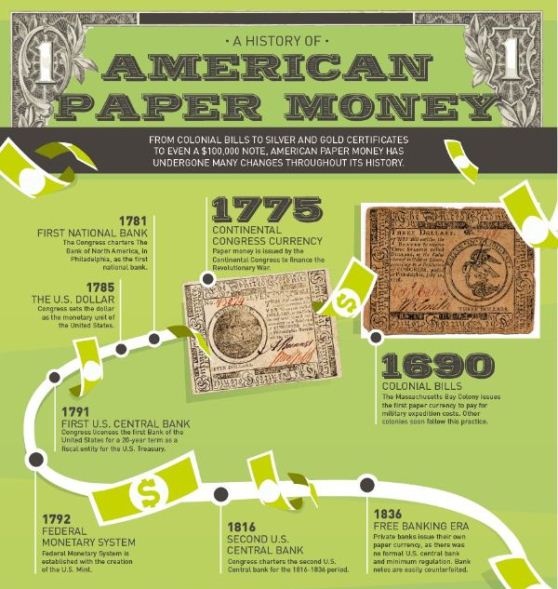 Source: creditseason
Source: creditseason

